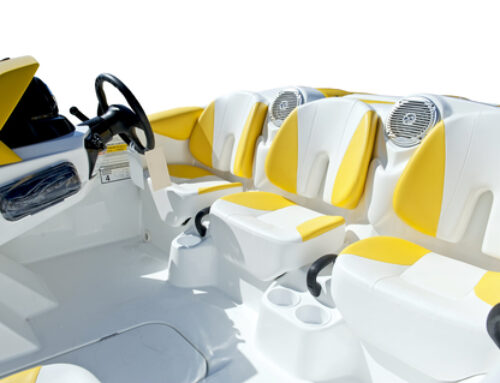Making window screening work
Compiled by Juli Case
Question: I fabricate front enclosures on house boats using smile zippers and a vinyl-coated polyester fabric. I use the double-finish technique I learned at a canvas training facility, with good results. A customer asked to have screening over the window portion. It works fine when it’s hanging, but it’s too bulky when rolled up. How can I make this work?
Answer: We turned to members of the Marine Fabricators Association for advice. While we received a number of suggestions, two came up more often than others.
The first suggestion involves changing the type of screening material you’re using. Rather than using screen from a home store, try no-see-um netting. The fabric material is lightweight and has small openings to keep out insects. Because it’s fabric, it’s more flexible than traditional screening and won’t add as much bulk to your finished product.
The second suggestion is to fabricate screens that can be removed prior to rolling. The fabricators who suggested this most often use a hook-and-loop type fastening system, although some used zippers, a combination of hook-and-loop and zipper, or even snaps. They report that their customers like this option, since the screens can be up only when needed and they can be stored the rest of the time.
A couple of fabricators mentioned using a separating zipper. One mentioned that he makes the screen the same size and shape as the smile zipper. He makes the upper border of the curtain an extra inch tall to make room for roll-up straps for the smile zipper window above the glass edge, then sews a zipper across the top, between the roll-up straps and the connection welt or zipper at the top of the curtain. The screen hangs from this zipper when in place. Then he adds a zipper stacked on top of the smile zipper on the outer edge, therefore zipping the screen over the opening after the glass is rolled up.
If your customer doesn’t need through-way access, one fabricator suggested that you sew the screen to the outer portion of the smile zipper. He cautioned to make sure that the roll-up straps are on the inside of the screen.
Another fabricator covers only the smile zipper area with screen. His shop uses a 1-inch bias binding on the outside of the panel to cover the screen edge, then sews both edges of the binding down. They use a long-arm sewing machine for this technique, which was reported to make the work a lot easier.
 TEXTILES.ORG
TEXTILES.ORG 





